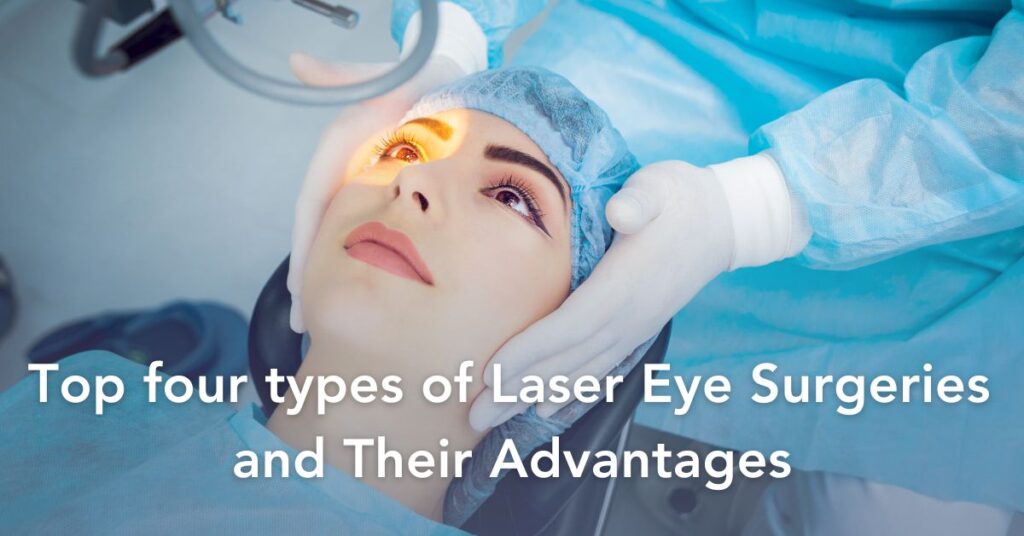Top four types of Laser Eye Surgeries and Their Advantages

Laser eye surgery has been a game-changer for people with refractive errors such as short-sightedness, farsightedness, astigmatism, etc.
This is a secure and efficient method to improve eyesight without requiring glasses or contact lenses. This blog will discuss different types of laser eye surgeries and their advantages. Let us look at the types of eye surgeries, some offered at Global Eye Hospital, which have brought a revolutionary change in eye healthcare.
LASIK (Laser-Assisted In Situ Keratomileusis)

LASIK is the most popular and widely used laser eye surgery.
To perform the procedure, the surgeon utilizes either a microkeratome or a femtosecond laser to produce a thin flap on the cornea. The flap is lifted, and the underlying corneal tissue is reshaped using an excimer laser. After the flap is repositioned, the eye can heal.
Advantages:
LASIK offers fast recovery time, with most patients returning to their daily activities within a few days. It also provides excellent results, with most patients achieving 20/20 vision or better.
PRK (Photorefractive Keratectomy)
Another type of eye surgery is PRK. It involves removing the cornea’s outer layer (epithelium) before reshaping the underlying tissue with an excimer laser. The epithelium then grows back over the cornea in a few days.
Advantages:
PRK is a good option for people with thin or other corneal irregularities. It is also a better choice for people involved in contact sports, as it eliminates the risk of dislodging the corneal flap created during LASIK.
SMILE (Small Incision Lenticule Extraction)
A femtosecond laser is used in SMILE, a recent form of laser eye surgery, to create a small corneal incision and extract a lenticule (a small piece of tissue).
Advantages:
SMILE offers a minimally invasive approach to laser eye surgery. It also provides faster recovery time and fewer dry eye symptoms than other laser eye surgeries.
LASEK (Laser Epithelial Keratomileusis)

LASEK is similar to LASIK, but the surgeon only removes a thin layer of the cornea’s outer layer (epithelium) before reshaping the underlying tissue with an excimer laser. The epithelium is then replaced, acting as a natural bandage.
Advantages:
LASEK is a good option for people with thin or other corneal irregularities. It also eliminates the risk of complications associated with creating a corneal flap during LASIK.
Conclusion:

Laser eye surgery has come a long way in recent years, and several types of procedures are now available to correct refractive errors. It is essential to consult with an eye doctor to determine the best option for your needs. Regardless of the type of procedure you choose, laser eye surgery offers significant advantages, including improved vision, convenience, and a better quality of life.
It’s better to get tested and know the status of your condition from one of the most reputed eye care hospitals in Hyderabad. At Global Eye Hospital, we are well-equipped and experienced in offering all treatment options for all refractive errors.
Book your appointment now for all eye-related services at Hyderabad’s best eye care hospital.
Your Vision Our Focus


